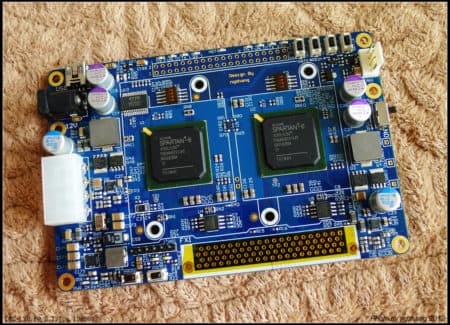THERE IS A GOOD CHANCE that your awareness of Bitcoin and the cryptocurrency explosion came into full bloom in late 2017. If you are like most, the term “bitcoin” has been hovering around your head all year, but it’s been the explosion in its value that has taken the world by storm that likely got your attention. “Should I be investing in Bitcoin?” you may ask.
At the beginning of 2017, a single Bitcoin was valued at just less than $1,000.USD but in early December of 2017, it reached a price over $11,000.USD. But here is the interesting fact that you may not know: the dollar value of Bitcoin is directly proportional to the electricity used to mine it.
Understanding Cryptocurrency Mining
While investment in Bitcoin has made some people incredibly rich, and while Bitcoin competitors too are enjoying a comparable enrichment in perception, value, and attention, the cryptocurrency market as configured in today’s world faces an environmental challenge of galactic proportions. That’s because of the way cryptocurrencies work.
The problem is that nation-states are finding themselves decades behind in developing new sources of clean energy, putting a serious damper on a bright new invention like cryptocurrency systems.
An in-depth primer on how Bitcoin, for example, works is beyond the scope of this article. However, in short, cryptocurrencies offer a way to exchange money electronically without the need for third-party banks or financial services like PayPal. Crucially, cryptocurrencies involve extreme mathematical calculations to verify the validity of transactions, and this work happens across vast arrays of computer hardware in a process called “mining.”
Because one can make money mining Bitcoin and other rival cryptocurrencies, computer geeks in basements have rigs of GPUs, CPUs and other hardware doing mining 27×7. But the big mining work is also happening in larger installations as well. (image 01 – 02)
The Environmental Impact
The net result of this growth means that cryptocurrencies are burning electricity at a phenomenal rate. It has been estimated that just the worldwide Bitcoin mining network—not counting the rival currencies—consumes enough electricity to power 821,940 average American homes.

01 – A 2013 image of the Lancelot FPGA-based mining board. As mining difficulty increases an arms race of sorts strives to keep up with demand, but our global energy is the limiting factor.
Still, Derek Thompson, writing in the Atlantic, has called bitcoin an “ingenious and potentially transformative technology” and one that essentially does to money what the Internet did to information and knowledge. Recall that the Internet is founded on Libertarian values and cryptocurrencies too are essentially built in the same spirit.
The problem is that nation-states are finding themselves decades behind in developing new sources of clean energy, putting a serious damper on a bright new invention like cryptocurrencies and the ingenious new computer systems that power them. Sadly, money and politics have conspired to keep fossil fuels in the forefront despite massive jobs creation capabilities in new sustainable energy markets.

02 – To lower the energy cost bitcoin minors have set up shop in places like Iceland, shown here in this large installation where geothermal energy is cheap.
As of late November 2017, the total energy use required to power the web of hardware processing Bitcoin globally is estimated at 31 terawatt-hours per year. That’s the same energy as what is used by 159 countries, including Ireland, in the world annually. The current energy demand rate is unsustainable.
Where From Here
It is true that there are now new methods being developed to solve the puzzles involved in the verification of transactions processes behind cryptocurrencies, such as moving to “proof of stake” versus “proof of work” based methods. Ethereum, a rival to Bitcoin, is planned to go this route. While there are schemes in the making to solve the energy crisis of cryptocurrency mining, computer scientists are now saying that quantum computers pose an imminent threat to bitcoin security, thereby potentially undermining the entire system. Quantum computers may be able to break Bitcoin security within ten years, say experts.
Why embrace a financial system—or any system for any human purpose—that works backward against all you are doing to solve the global environmental crisis, not make it worse?
If we know anything about the acceleration of technologies it is that they are accelerating. Free from government interference and operating primarily as a peer-to-peer currency network, Bitcoin’s meteoric rise is a “signal” of significance in our lifetime. When have we used a currency that was not government controlled?
So how does this all affect you, Mr. Architect?
Well, it affects all of us the same way but with a slight twist. Architects under the auspices of the AIA 2030 Challenge and other sustainable measures are leading the global charge to combat global warming through reducing the carbon footprint of the built environment, of which they largely design.
If you are interested in the Bitcoin bandwagon shouldn’t you look into the environmental impacts first? Why embrace a financial system—or any system for any human purpose—that works backward against all you are doing to solve the global environmental crisis, not make it worse?
The benefits of cryptocurrencies and the blockchain technologies behind them are inspiring. But architects, especially, need to consider the contradictions and ethical conundrum involved. And perhaps they should be a voice against them until their environmental impacts are reasonable.
Image Credits
Format equates to “party with copyright” / “party with reserved rights of use.” (eg: image: FJMT / Architosh. All rights reserved.)
Title image credit: Composite image of two Wiki Commons images (Hydroelectricity image by Jürgen from Sandesneben, Germany. Distributed under CC-By 2.0 License, and Lancelot FPGA-based mining board, 2013, CreativeCommons License / Architosh. All rights reserved.)




Reader Comments
Comments for this story are closed